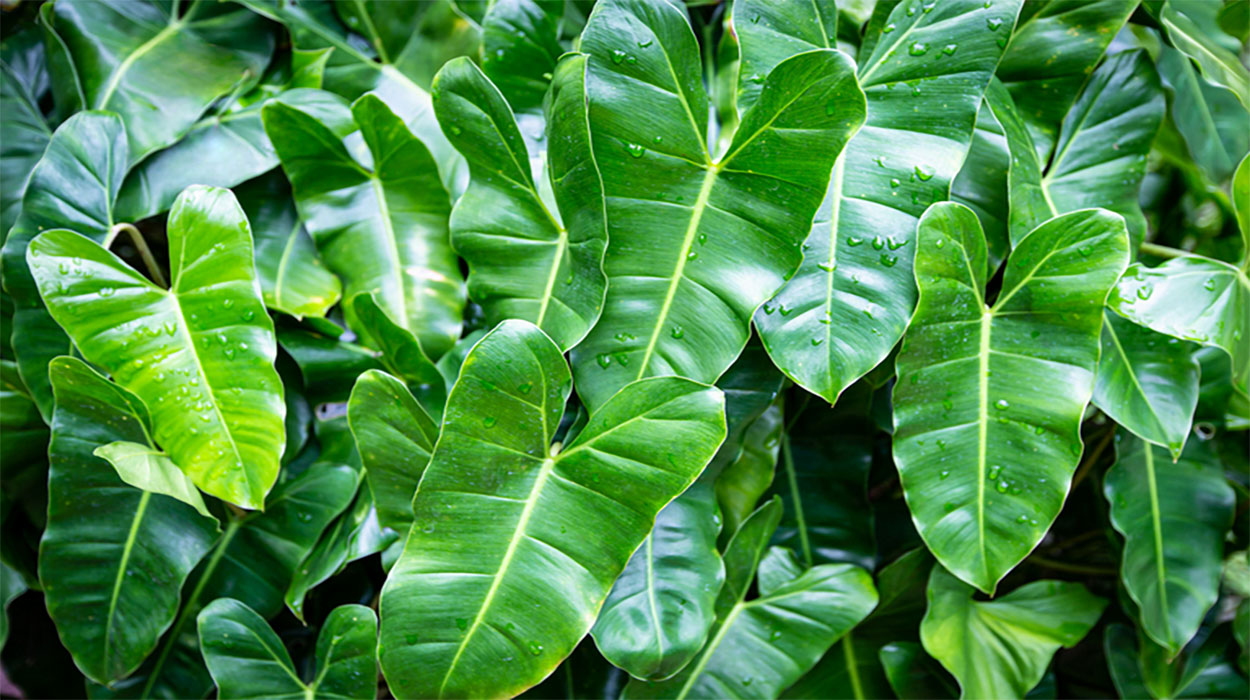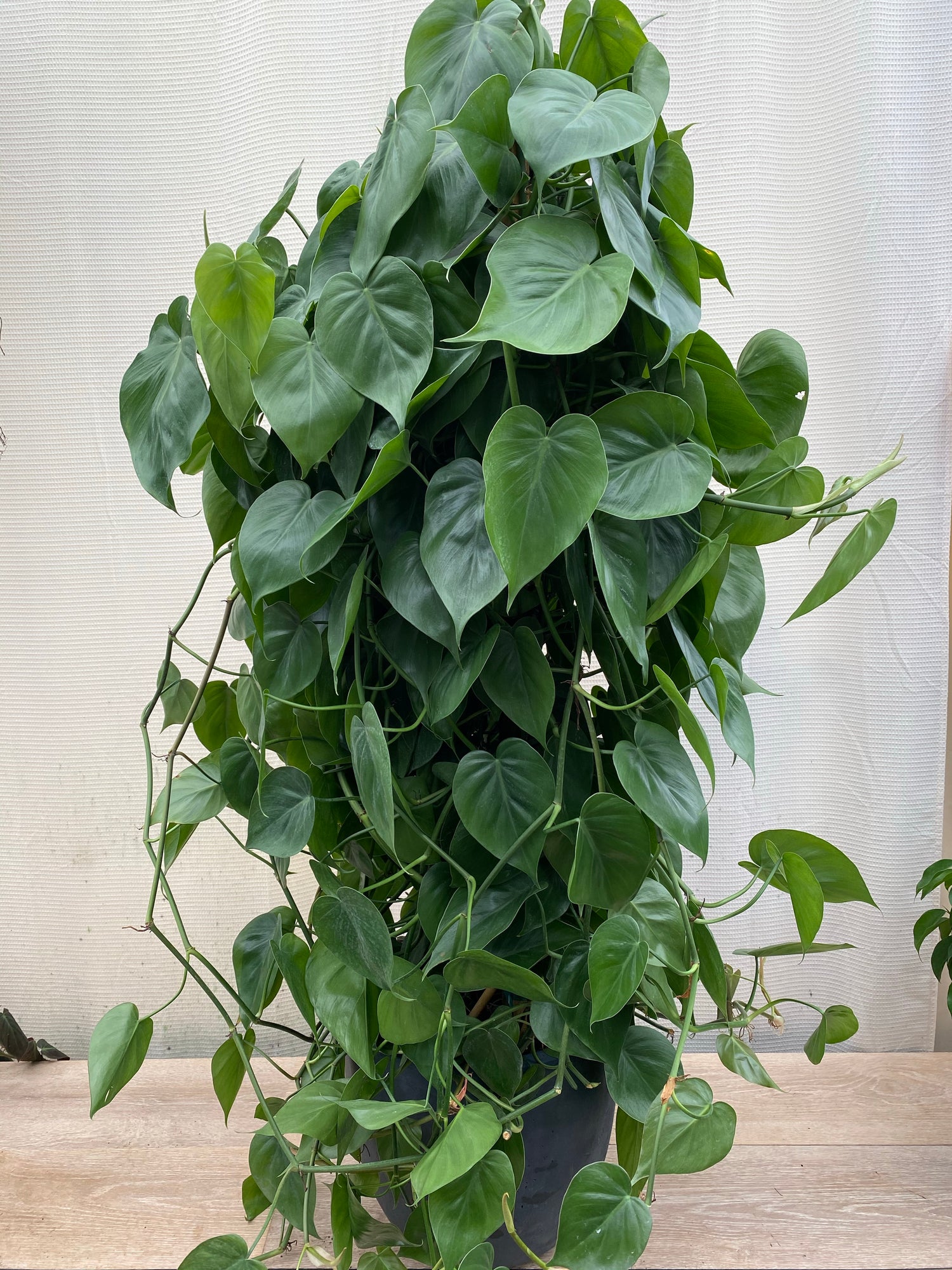The Wonderful World of Philodendrons
Philodendrons! Just the name sounds kind of fancy, right? But don’t let that fool you. These plants are actually super popular and for good reason. They’re not just pretty faces; they’re also relatively easy to care for, making them a go-to for plant lovers of all levels, from total newbies to seasoned green thumbs.
The Philodendron family is HUGE. We’re talking hundreds of different species, each with its own unique look and personality. You’ve got the classic heartleaf philodendron (Philodendron hederaceum), the one you probably picture when you hear the name. Its little heart-shaped leaves are just so charming and it’s a vining type, meaning it loves to climb or trail. Then you’ve got the split-leaf philodendron (Monstera deliciosa) – okay, okay, technically it’s not actually a Philodendron, but it’s often mistaken for one and is in the same Araceae family, so it gets an honorary mention for its dramatic, fenestrated leaves.
But let’s get back to the true Philodendrons. You’ll find them in all sorts of shapes and sizes. Some have big, bold leaves that make a real statement, while others have smaller, more delicate foliage. Some are climbers, happily wrapping their aerial roots around moss poles or trellises, reaching for the light. Others are self-heading, meaning they grow upright in a more bushy form. The variety is truly mind-blowing!

Why Everyone Loves a Philodendron
So, what’s the big deal with Philodendrons? Well, for starters, they’re pretty adaptable. They can tolerate a range of indoor conditions, which is a big plus for those of us who don’t have perfectly lit homes. They’re not super fussy about humidity either, although they definitely appreciate a bit of extra moisture in the air, especially during dry winter months.
Another major win is their air-purifying abilities. Like many houseplants, Philodendrons can help filter out common household toxins, making your indoor environment a little bit healthier. Plus, let’s be honest, they just look good! Their lush green foliage adds a touch of nature and tranquility to any space, instantly making it feel more inviting and alive.
Getting the Basics Right: Philodendron Care 101

Caring for a Philodendron doesn’t have to be rocket science. Here are a few key things to keep in mind:
# Light: Finding the Sweet Spot
Most Philodendrons thrive in bright, indirect light. Think of the kind of light you’d get near an east-facing window or a few feet back from a south or west-facing one. Direct sunlight can be a bit too harsh and can scorch their leaves, leaving unsightly brown spots. If your plant isn’t getting enough light, you might notice its growth slowing down or its leaves becoming smaller and paler.
# Watering: The Balancing Act

Watering is where a lot of plant parents can get tripped up. The key with Philodendrons is to let the top inch or two of soil dry out between waterings. You don’t want the soil to stay soggy, as this can lead to root rot, which is a big no-no for any plant. When you do water, make sure to water thoroughly until water drains out the bottom of the pot. Then, let the excess water drain away. Adjust your watering schedule depending on the season – you’ll likely need to water more frequently in the warmer, growing months and less in the cooler, dormant months.
# Soil: Giving Them a Good Foundation
Philodendrons aren’t super picky about their soil, but they do appreciate a well-draining mix. A good quality potting mix that contains peat moss, perlite, and vermiculite is usually a safe bet. This type of mix helps to retain some moisture while still allowing for good drainage, preventing those dreaded soggy roots.
# Humidity: They Like a Little Moisture
While they can tolerate average household humidity, Philodendrons really appreciate a bit more moisture in the air. If your home is particularly dry, especially in the winter when the heating is on, you might want to consider increasing the humidity around your plant. You can do this by using a humidifier, placing the pot on a pebble tray filled with water (making sure the bottom of the pot isn’t sitting directly in the water), or grouping your plants together, as they naturally create a more humid microclimate.
# Temperature: Keeping Things Comfortable
Most Philodendrons are happy with average room temperatures, somewhere between 65-80°F (18-27°C). They don’t like extreme temperatures or sudden drafts, so keep them away from things like heating vents or drafty windows.
# Feeding: A Little Boost
During the growing season (spring and summer), you can give your Philodendron a diluted balanced liquid fertilizer every two to four weeks. This will provide them with the nutrients they need to support all that lovely new growth. In the fall and winter, when the plant’s growth naturally slows down, you can cut back on or stop fertilizing altogether.
Common Philodendron Issues (and How to Tackle Them)
Even with the best care, you might occasionally run into a few issues with your Philodendron. Here are a couple of common ones to watch out for:
# Yellowing Leaves:
This can be a sign of a few different things, including overwatering, underwatering, or nutrient deficiencies. Check the soil moisture to determine if you’re watering too much or too little. If the soil seems okay, it might be time to give your plant a little fertilizer boost during the growing season.
# Brown, Crispy Leaf Tips:
This is often a sign of low humidity or inconsistent watering. Try increasing the humidity around your plant and make sure you’re watering consistently.
# Leggy Growth:
If your Philodendron is producing long, spindly stems with few leaves, it’s likely not getting enough light. Try moving it to a brighter spot (but still indirect light!).
Propagating Your Philodendron: Sharing the Love
One of the coolest things about Philodendrons is how easy they are to propagate. This means you can create new plants from cuttings of your existing one! The most common method is stem cuttings. Simply snip off a healthy stem that has at least one leaf node (the little bump on the stem where a leaf grows). You can then root this cutting in water or directly in moist potting mix. With a little patience, you’ll have a brand new Philodendron to keep or share with friends!
Conclusion: The Enduring Appeal of Philodendrons
Philodendrons are more than just pretty houseplants; they’re adaptable, relatively low-maintenance companions that bring a touch of the tropics to our homes. With their diverse shapes, sizes, and growth habits, there’s a Philodendron out there for just about everyone. By understanding their basic care needs, you can enjoy their lush greenery and air-purifying benefits for years to come. So go ahead, embrace the wonderful world of Philodendrons – your indoor jungle will thank you!
Frequently Asked Questions (FAQs) About Philodendrons
Are Philodendrons toxic to pets?
Generally, yes, Philodendrons contain calcium oxalate crystals, which can cause irritation and discomfort if ingested by cats, dogs, or other pets. It’s best to keep them out of reach of your furry friends.
How often should I repot my Philodendron?
You’ll typically need to repot your Philodendron every one to two years, or when you notice roots growing out of the drainage holes. Choose a pot that’s only slightly larger than the current one.
Can Philodendrons grow in low light?
While Philodendrons can tolerate lower light conditions than some other houseplants, they will thrive best in bright, indirect light. In very low light, their growth may be stunted, and their leaves may become smaller and lose some of their vibrancy.
What are aerial roots on a Philodendron? Should I cut them off?
Aerial roots are natural for many vining Philodendron species. They help the plant climb and absorb moisture and nutrients from the air. It’s generally not recommended to cut them off, as this can stress the plant. You can gently direct them into the soil or around a support like a moss pole.
My Philodendron’s leaves are drooping. What could be the reason?
Philodendron Plant
